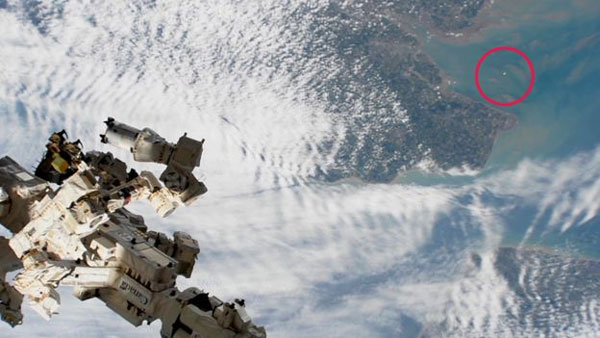[ad_1]
Go! This is the moment the UK-led RemoveDebris mission left the International Space Station (ISS).
The small satellite has a big job ahead – to trial the technologies that could one day be used to clean up orbiting junk.
It carries a net to trap an object, and a harpoon that it will fire at a target to prove such projectiles can be used effectively in weightless conditions.
At 100kg, RemoveDebris is actually the largest sat yet released from the ISS.
The time for its ejection last week was chosen very carefully so that the spacecraft would immediately fly over its control station – in Guildford, southern England.
Engineers picked up its signal on the first pass overhead.
The movie sequence was captured by American space agency astronaut Ricky Arnold. He manages to get a clear view not just of RemoveDebris flying free after its ejection from the ISS – but of the unmistakeable shape of southern England and The Channel below the departing satellite.
 |
|
RemoveDebris (dot in red circle) moves out over the Kent coastline and the Thames estuary — Photo: NASA/NANORACKS
|
The RemoveDebris project has its scientific leadership at the Surrey Space Centre, University of Surrey; and was assembled at Surrey Satellite Technology Ltd.
But the mission has technical input from across Europe, and it is the European Commission that has put up half the €15m (£13m) cost.
RemoveDebris will go through a few weeks of commissioning tests before beginning its experiments.
There is some 7,500 tonnes of old space hardware circling above the Earth.
This junk includes old rocket segments; bits that have fallen off satellites; flecks of paint – even tools dropped by spacewalking astronauts.
The concern is that this material is becoming so abundant it could pose a collision hazard to operational missions that provide important services, such as telecommunications and environmental monitoring.
RemoveDebris was designed to test relatively simple – and therefore low-cost – methods of clean-up.
Other missions will try alternatives, including robotic arms that reach out and grab junk. But this kind of approach is very complex and therefore much more expensive to implement.
Source: BBC
[ad_2]
Source link
